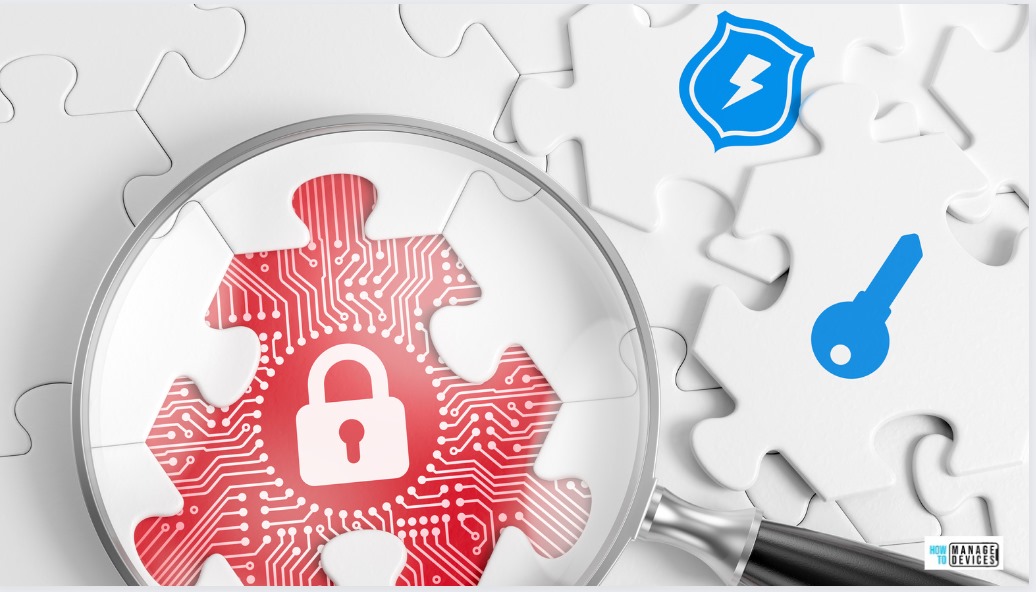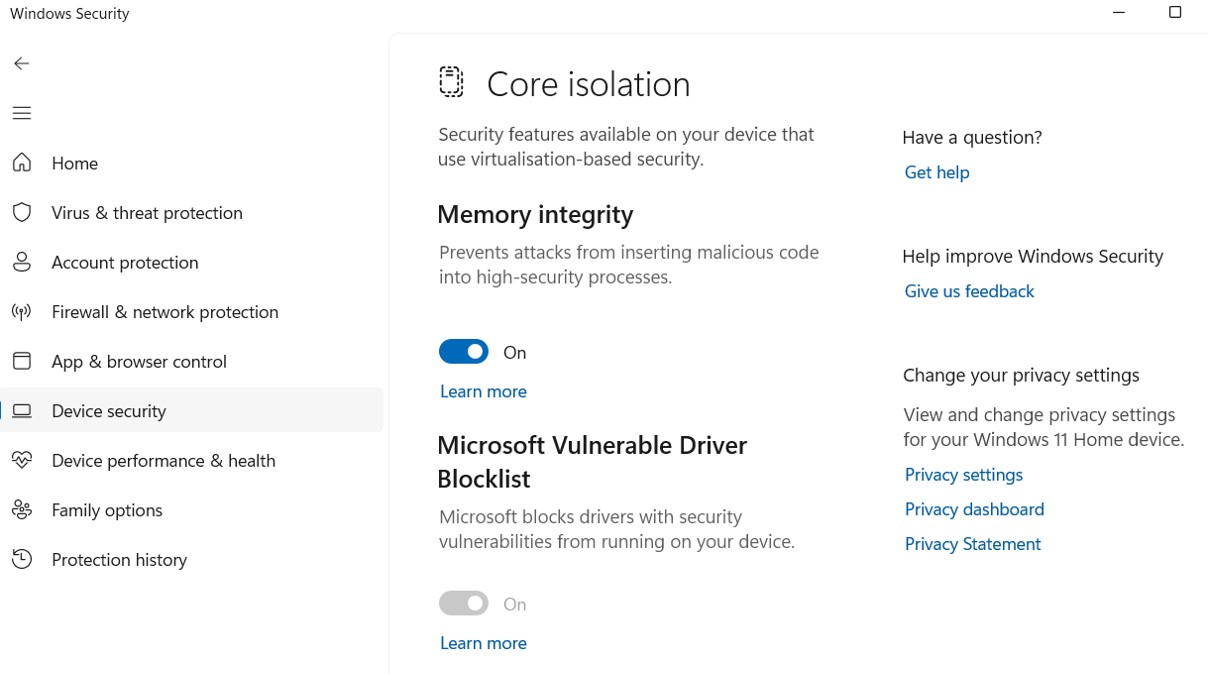- Microsoft's vulnerable driver blocklist protects against unsafe or malicious drivers.
- The feature is built into Windows 10, 11, and Server, and is manageable and updatable by Microsoft.
- Its activation is key against BYOVD attacks and ransomware, reducing risks to the system kernel.

Today, the cybersecurity It is one of the priority concerns of any user or system administrator. New threats constantly emerge that try to exploit vulnerabilities. That's where the Microsoft Vulnerable Driver Blocklist Microsoft's Vulnerable Driver Blocklist. A feature that has gained particular relevance in modern versions of Windows.
And one of the most delicate areas in Windows security is the controllers or drivers. That small but vital software is susceptible to all kinds of attacks, such as the dreaded BYOVD (“Bring Your Own Vulnerable Driver”). In this article, we'll explain what you need to know about this block list and how it works.
What is the Microsoft Vulnerable Driver Blocklist?
Microsoft Vulnerable Driver Blocklist is a security feature built into Windows and in its main protection solutions, such as Microsoft DefenderIts purpose is to prevent the loading and execution of dangerous drivers in the operating system. These drivers, generally developed by third parties rather than Microsoft itself, can have security flaws—or even be maliciously designed—making them ideal entry points for advanced attacks.
The list works like this a kind of "black list" in which controllers that meet one or more of the following characteristics are incorporated:
- Recognized vulnerabilities: Drivers whose weaknesses can be exploited to escalate privileges in the Windows kernel or bypass protections.
- Malicious behavior: Drivers that include code that can cause damage, install malware, or are signed with certificates related to malicious software.
- Violation of the Windows security model: Drivers that, without necessarily being malicious, can bypass the operating system's security restrictions.
In short, Microsoft's blocklist acts as a preventative shield that prevents potentially dangerous drivers from running, even when they have a valid digital signature and certification. This strengthens one of the most critical layers of Windows protection, the kernel, and significantly complicates the work of cybercriminals.
How the blocklist works: how it protects your computer
La Microsoft Vulnerable Driver Blocklist It is not a static element, but a living mechanism that is constantly updated. Microsoft, in collaboration with hardware manufacturers (IHV) and OEMs, proactively monitors the driver ecosystem to identify and block components that pose a threat.
When a driver is identified as vulnerable, malicious, or incompatible with Windows security standards, it is added to the list and automatically blocked from loading on computers where the blocklist is active. This is done in several ways, depending on the version and system configuration:
- Memory Integrity (HVCI or Hypervisor-Protected Code Integrity): If enabled (by default on many new Windows 11 PCs), the blocklist takes effect by blocking the drivers included in it.
- Safe Mode: Windows devices running in S mode, which boasts a more controlled and secure environment, also have the blocklist enabled by default.
- Application Control in Windows Defender (App Control for Business): Allows administrators to apply the recommended list through their own security policies.
- Windows Security (system app): Since Windows 11 22H2, the feature is enabled by default and can be managed from the Device Security > Core Isolation interface.
Which drivers exactly does the blocklist block?
Not all drivers are subject to the blocklist, only those that meet certain objective criteria that make them potential hazards. Among the most common reasons why a driver is added to this list are:
- Existence of security vulnerabilities known and documented.
- Its use has been detected in active attacks, including exploitation by ransomware, malware, or advanced persistent threats.
- Use of certificates related to malicious campaigns for your digital signature.
- Behavior that allows the bypassing of the Windows security model, although it is not classic malware.
Other names that may be on the list include older drivers for disk utilities, advanced hardware management programs, virtualization software, or even drivers for certain peripheral devices whose security has been compromised.

Blocklist Update and Support
One of the great strengths of Microsoft Vulnerable Driver Blocklist is that It is a living list and is maintained over time. Microsoft updates it with each new major version of Windows (usually once or twice a year for major updates). It may also release specific patches through Windows Update or as manual downloads in the event of new threats.
Although the blocklist provides a very high level of defense, Its activation may have certain side effects on hardware or software compatibility and operation. For example, if an essential driver for a particular device is blocked, it may stop working properly and, in rare cases, even cause a blue screen of death (BSOD).
Therefore, Microsoft recommends first validating the policy in audit mode, reviewing blocking events before forcing a permanent block. In enterprise environments, this is done through App Control and the corresponding policy, allowing you to monitor which drivers would be blocked and make decisions on a case-by-case basis.
As a general rule, the blocklist is sufficiently refined to minimize false positives and balance protection against potential compatibility issues. However, unexpected conflicts may arise on systems with very specific hardware or older software. In this case, it's a good idea to report the issue through Microsoft channels so we can discuss removing or updating the affected driver.

How to enable or disable the Microsoft Vulnerable Driver Blocklist
Depending on the version of Windows and device settings, The blocklist can be enabled or disabled by default. Since the release of Windows 11 version 22H2, the feature has been enabled on all devices, but it can still be managed manually.
There are Two major methods for controlling the state of the blocklist:
- From the Windows Security interface:
- Open the Windows Security app (search in the Start menu).
- Go to the “Device Security” section and then to “Core Isolation.”
- On that screen, enable or disable the “Microsoft Vulnerable Driver Blocklist” option as appropriate.
- In older versions (Windows 10 or 11 21H2), the option may not appear or may require you to enable HVCI first.
- Using the Windows Registry:
- Open the registry editor (regedit.exe).
- Navigate to HKEY_LOCAL_MACHINE\SYSTEM\CurrentControlSet\Control\CI\Config.
- Edit or create the DWORD value “VulnerableDriverBlocklist”, assigning it 1 to enable the feature, or 0 to disable it.
After the change, it is recommended to restart your computer for the settings to take effect.
Recommendations for users and companies
To get the most out of the protection provided by the Microsoft Vulnerable Driver Blocklist, both home users and system administrators should follow a few simple steps: good practices:
- Always keep the operating system fully updated, as newer versions often incorporate crucial improvements to the blocklist and Windows kernel protection.
- Periodically check if the blocklist is active from the Windows Security application (especially after major system updates or settings changes).
- In enterprise environments, deploy App Control for Business policies to ensure that all devices inherit the latest version of the list and monitor for potential issues before implementing permanent blocks.
- Validate policies in audit mode first, to minimize compatibility conflicts and resolve possible false positives.
- Stay tuned for Microsoft security bulletins and the hardware manufacturer to learn about possible new affected drivers.
- Submit suspicious drivers to Microsoft Using official tools and portals, contributing to the continuous improvement of global protection.
Advanced management of the Microsoft Vulnerable Driver Blocklist: download and manual application
For advanced users and businesses, Microsoft offers the ability to Download the latest version of the blocklist in binary or XML format from your download portal. This is useful in scenarios where maximum control is required or when, for security or compliance reasons, you don't want to rely solely on automatic updates.
The usual procedure is as follows:
- Download the Policy Update Tool App Control.
- Obtain and extract the Vulnerable Driver Blocklist binaries.
- Select the appropriate file (audit or applied version) and rename it to SiPolicy.p7b.
- Copy SiPolicy.p7b to the %windir%\system32\CodeIntegrity location.
- Run the update tool to activate and update all App Control policies.
After restarting the computer, you can verify that the policy was applied correctly by reviewing the 3099 events in the Windows Event Viewer, under the CodeIntegrity log.
Impact on user experience and known issues
Despite the advantages, not everything is bright. Blocklist management can cause some inconvenience for the end user, especially in systems with highly customized needs. The most common problems usually include:
- Incompatibility with older hardware or legacy programs whose development has ceased and whose drivers have not been updated to meet new safety standards.
- Possible false positives that block perfectly legitimate, but unusual, drivers, which can render devices inoperable.
- Blue Screen of Death (BSOD) Cases if an essential boot element is blocked by mistake.
Why the blocklist is essential today
BYOVD attacks, exploitation of forgotten drivers and the sophistication of malware make it so the protection of the system core is more important than ever. Cybercriminals have proven they can exploit any loophole, and vulnerable drivers represent one of the most dangerous backdoors, operating at such a low level that they can disable or manipulate virtually any other security measure.
Microsoft's strategy of maintaining a centralized, dynamic blocklist connected to vendors and the security community is the best response to a threat that affects both individual users and large organizations.
Keeping the Microsoft Vulnerable Driver Blocklist active and up-to-date is one of the simplest and most effective ways to strengthen Windows security and make it harder for cybercriminals. Administrators are encouraged to use it in conjunction with other protection policies, and home users are encouraged to regularly review their Windows Security settings. This significantly increases the protection and peace of mind for your data and system.
Editor specialized in technology and internet issues with more than ten years of experience in different digital media. I have worked as an editor and content creator for e-commerce, communication, online marketing and advertising companies. I have also written on economics, finance and other sectors websites. My work is also my passion. Now, through my articles in Tecnobits, I try to explore all the news and new opportunities that the world of technology offers us every day to improve our lives.
